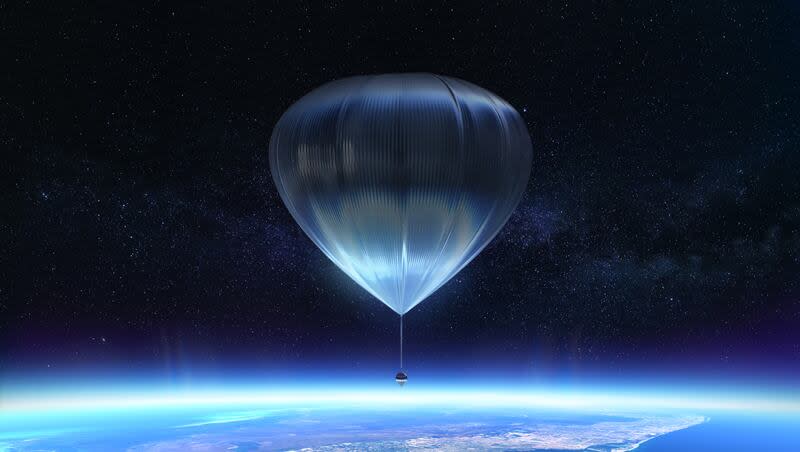Want an out-of-this-world meal? Check out this $495,000 meal and space balloon trip

Some people already describe amazing meals as “out of this world.” But now, a Michelin-starred chef has teamed up with space travel companies to offer food that literally fits that description.
Rasmus Munk, who co-owns and cooks at a Copenhagen-based restaurant called Alchemist, is working with SpaceVIP and Space Perspective to create and serve a lavish multi-course meal on a space balloon.
According to Food & Wine, Munk — who currently ranks internationally as a top-five chef and works at a restaurant with a reported 10,000 person waitlist — is collaborating with the space travel companies to make “the first stratospheric dining experience” on Space Perspective’s Spaceship Neptune capsule. The six-hour experience is limited to six guests and will cost about $495,000 per person.
Munk announced the venture with an Instagram post. “This is gonna be insane,” he wrote.
The space balloon is set to liftoff in 2025 from Kennedy Space Center in Florida and travel 100,000 feet above sea level, at which point the lucky, affluent guests will be served their course while viewing the rising sun above the earth, per Tasting Table.
Why is Munk doing this?
In a statement shared with Robb Report, the Michelin-starred chef, whose restaurant is decked out with a planetarium dome, explained that he wants to serve meals “inspired by space exploration during the last 60 years of human history.”
“I want to highlight food as a common thread in our human existence, and it will be truly meaningful to serve it while gazing down at the Earth’s curvature,” Munk said in the statement.
The founder of SpaceVIP, Roman Chiporukha, said in a separate statement, “This mission is poised to redefine not just private exploration, but the very essence of fine dining,” per Robb Report.
It’s not only the food that’s luxurious
Tasting Table shared that the space balloon trip will include:
360-degree windows offering amazing views of the Earth below.
A cocktail bar.
Plush reclining chairs.
Wi-Fi connection (for live-streaming).
A mini kitchen.
Additionally, the “astronauts” will wear made-to-measure astronaut suits by Ogier — a French skiwear brand, according to Food & Wine.
Munk told Decanter that some dishes will actually need to be prepared before the expedition starts due to the vehicle’s tight space. He claims the foods will be reflective of space travel’s impact on society “both scientifically and philosophically.”
The chef must curate for higher altitudes
The luxurious menu hasn’t been released yet, and Munk will have to consider the fact that taste differs away from land as he prepares it.
Charles Spence, a professor of experimental psychology at Oxford University, said to BBC the reasons why food taste different on an airplane is due to a lack of humidity and lower air pressure. These factors significantly affect how we taste and even smell certain kinds of foods — often making our meals taste bland.
That’s the reason why some airlines provide salty or spicy snacks.
“Proper seasoning is key to ensure food tastes good in the air,” said Russ Brown, director of in-flight dining and retail at American Airlines, per BBC. “Often, recipes are modified with additional salt or seasoning to account for the cabin dining atmosphere.”
To put the space balloon trip into perspective, airline flights typically stay lower than 35,000 feet above sea level. This trip will go beyond that, reaching 100,000 feet above sea level, according to Decanter.

